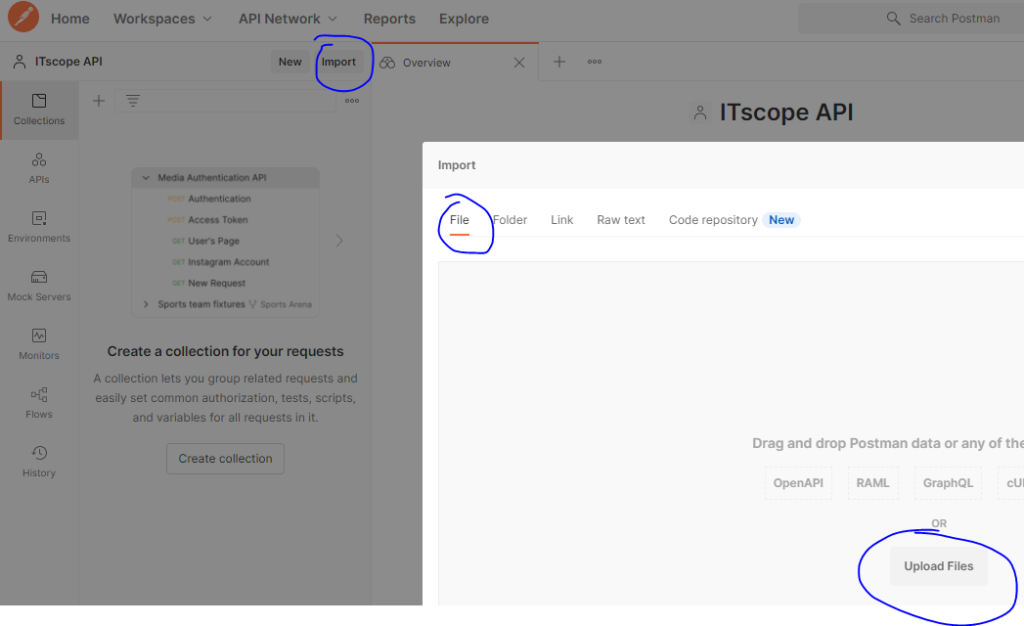Data Model from XML Schema (XSD)
The data model for the ITscope data formats can be retrieved in XML Schema (XSD) using the interactive API, via the API method info. No API key is required for this retrieval. Simply set the data output format as the URL path.
URL for schema definition of the standard data output format:
https://api.itscope.com/2.1/info/schema/standard.xsd
URL for schema definition of the standard update data output format:
https://api.itscope.com/2.1/info/schema/standardupdate.xsd
URL for schema definition of the developer data output format:
https://api.itscope.com/2.1/info/schema/developer.xsd
URL for schema definition of the developer update data output format:
https://api.itscope.com/2.1/info/schema/developerupdate.xsdInstructions for Java
The result of the API retrieval for the schema depending on the data format, i.e. the XML definition, can then be stored locally on the hard disk, e.g. under c:\temp\itscope_api.xsd
The Java binding compiler (xjc.exe) can now create a Java class model using to the XML definition.
This call creates a package named en.itscope.api.
‘c:\Program Files\Java\jdk1.7.0_51\bin\xjc.exe’ -p en.itscope.api c:\temp\itscope_api.xml
Instructions for C#, .NET and VB.NET
These are some example tools or instructions for generating schemas.
- XML schema definition tool (Xsd.exe) directly in VisualStudio. See the following links for instructions: https://msdn.microsoft.com/de-de/library/x6c1kb0s%28v=vs.120%29.aspx
or https://msdn.microsoft.com/en-us/library/x6c1kb0s%28v=VS.100%29.aspx
API client for different developer languages
The API clients can be generated with the public framework used by ITscope, Swagger (see http://www.swagger.io), to create API data models and API documentation. These clients should serve as a framework for an application, which should save work, but does not yet deliver a complete client. This means individual customisation is necessary. If the XML format is used, a function for deserialising an XML string must be implemented.
The online Swagger editor can create a client in many developer languages based on the ITscope API definition.
To do this, the following link must be imported into the online Swagger editor via the File -> Import URL… menu item: https://api.itscope.com/2.1/swagger.json.
After importing the URL, some errors are shown in the right-hand area, these can be ignored and closed with the ‘Collapse’ button. The client can be generated despite these errors.
Afterwards, the respective client can be selected for download via the ‘Generate Client‘ menu item.
List of possible clients:
- Akka Scala
- Android
- Async Scala
- Clojure
- C#
- C# .NET 2.0
- Cwiki
- darts
- Dynamic HTML
- Flash
- Go
- Groovy
- html
- html2
- Java
- Javascript
- Javascript Closure Angular
- Jmeter
- Objective-C
- Perl
- PHP
- Python
- QT 5 C++
- Ruby
- Scala
- Swift
- Tizen
- Typescript Angular
- Typescript Angular 2
- Typescript Fetch
- Typescript Node
Postman
For users of Postman, we have created a project that contains all the endpoints of our API version 2.1. The requests are documented in Postman.
Postman can be downloaded here.
After downloading, Postman will ask you if you want to register. You can also skip the registration process: ‘Skip signing in and take me straight to the app’.
You can find the dowload of the Postman Project at the bottom of this page.
In Postman, choose a workspace and press the Import button.

The following variables are already created in Postman and can be filled with your API credentials.
| Variable | Description | Example |
| baseUrl | The ITscope API url and version | https://api.itscope.com/2.1 |
| Account_ID | The ITscope account ID (as username) | m123456 |
| API_KEY | The API key (as a password) | abc123de_f456… |

Save the variables. Postman is now ready to start.
